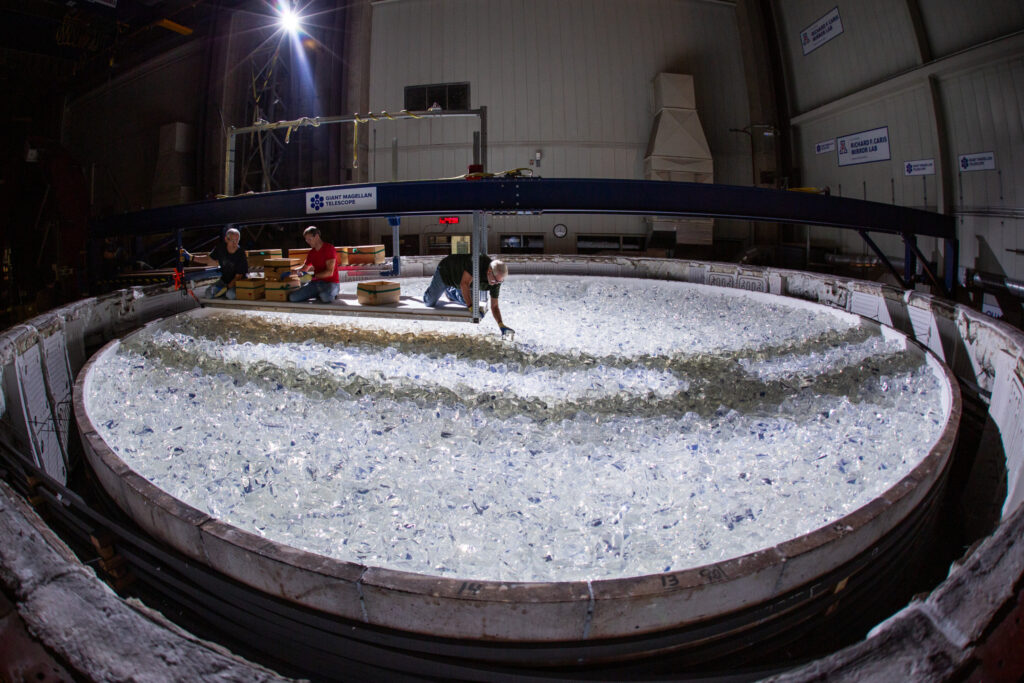Engineers have begun to produce the last, seventh mirror of the Giant Magellanic Telescope. When they are assembled in a giant mount, which is now being manufactured in the USA, a tool will be created that can collect light from a larger area than any other on Earth.

Engineers are making a giant mirror
Employees of the Richard F. Caris Mirror Laboratory, which is part of the University of Arizona, have begun manufacturing the last, seventh mirror of the Giant Magellanic Telescope. This huge instrument will soon be mounted in Chile.
In order to create a mirror, the laboratory staff placed 20 tons of special glass with a low coefficient of expansion of the Ohara E6 brand in a one-of-a-kind rotating oven. It will heat up to 1165 °C in it, acquire the necessary curved shape, and then cool down for another three months. After that, the specialists will start polishing it.
When the mirror is ready, it will have a diameter of 8.4 m. Together with six others, it will be mounted on a special structure and will form a continuous surface area of 368 m2. The total diameter of the entire reflecting surface will be 25 m, which is more than any of the telescopes that exist now.
When will the Giant Magellan Telescope function?
The overall design of the Giant Magellanic Telescope will be 39 meters high — higher than an apartment building. It will take 2,100 tons of high-quality steel. Now the main elements are manufactured at a new plant in Rockford, Illinois. Meanwhile, critical infrastructure is being completed at the future location of the telescope in Chile.
All this is done to create a tool that will be 50 million times more powerful than the human eye. The Giant Magellan Telescope will be 200 times more sensitive and have 4 times higher resolution than any other astronomical instrument in the optical range. It is expected that it will see the first light at the end of this decade.
According to phys.org
Follow us on Twitter to get the most interesting space news in time
https://twitter.com/ust_magazine
